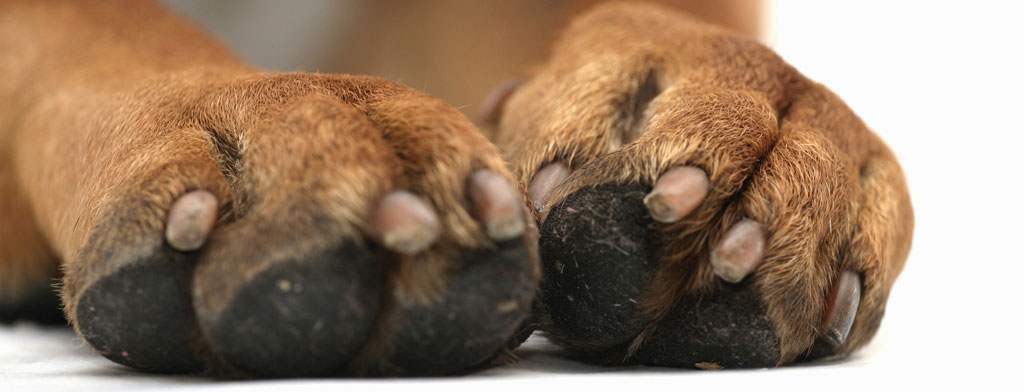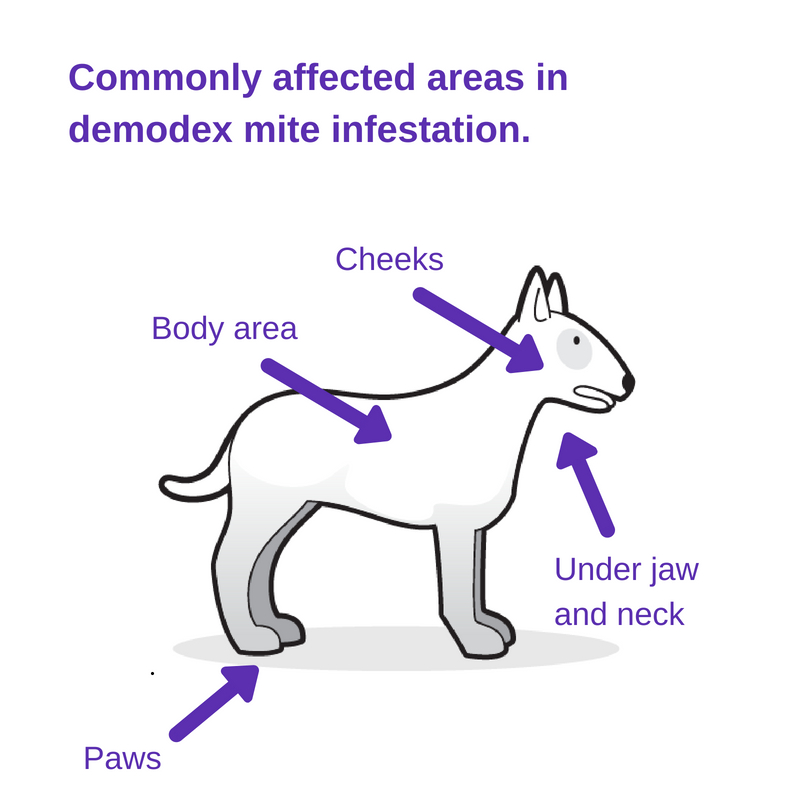A C

Global Veterinary
Communication Software Vic 9999 AU
0422 999 191
support@vetcheck.it

Canine Demodicosis
In some cases, management of this condition can be challenging and requires long term monitoring.
Overview
Demodex canis is a mite that lives in the hair follicles and sebaceous glands within the skin. They are transmitted directly from dam and puppies at birth. It predominantly is a problem of dogs with a compromised immune system and can be quite challenging to treat. Prognosis and treatment depend on the disease form.
| Localised |
|
| Generalised |
|
| Juvenile-onset |
|
| Adult-onset |
|
Purebreed dogs seem to be predisposed to juvenile-onset, generalised demodicosis and therefore are often recommended to be neutered and not used for breeding.
Signs
Common signs of demodicosis:
- Hair loss (often in circular patterns)
- Skin odour
- Itchiness
- Infection
- Ulceration
- Pustules
- Hyperpigmentation
This diagram shows the most common distribution of skin lesions in a dog with a demodex infestation.

Diagnosis
Diagnosis is by:
- Clinical signs
- Skin scrapings
- Hair shaft examination
- Skin biopsy
Management
Management of canine demodicosis requires the treatment of any underlying disease or skin infections with antibiotics or medicated shampoos.
Your pet may be prescribed one of these miticide treatments:
| ADVOCATE® (imidacloprid/moxidectin) | For the treatment and control of generalised demodicosis | Applied to the skin between the shoulder blades once a month |
| BRAVECTO® (fluralaner) | For the treatment and control of demodicosis | Given as a chewable tablet every 3 months |
| NEXGARD® (afoxolaner) | Treats and controls demodex mites | Given as a chewable tablet every month |
| SIMPARICA® (sarolaner) | Treats and controls demodex mites | Given as a chewable tablet every month |
It's important to note that once treatment begins, patients must be checked every 4-6 weeks to monitor the progress and obtain skin scrapings. It is not uncommon for treatment to take 6-12 months before two consecutive negative skin scrapings are obtained. Relapses can occur, so skin scrapings at annual revisits may be required.
Even though your pet may appear to be doing well after 2 months of treatment, mites may still be present and a relapse is likely if treatment and monitoring are not followed.
Prognosis
The successful cure rate for juvenile-onset generalised demodicosis is 70-80%. Dogs with adult-onset generalised demodicosis have a lower cure rate.
Treatment failure occurs when there is:
- Poor compliance with medications or skin scrapings regime
- Poor storage of medications
- Resistance in rare cases
References
Fourie JJ et al (2015) Efficacy of orally administered fluralaner (Bravecto(TM)) or topically applied imidacloprid/moxidectin (Advocate®) against generalized demodicosis in dogs. Parasitic Vectors Mar 28;8:187. doi: 10.1186/s13071-015-0775-8.
Hutt JH, Prior IC, Shipstone MA (2015) Treatment of canine generalized demodicosis using weekly injections of doramectin: 232 cases in the USA (2002-2012).Vet Dermatol. 2015 Jul 20. doi: 10.1111/vde.12223. [Epub ahead of print]
Mueller, R. S et al (2012), Treatment of demodicosis in dogs: 2011 clinical practice guidelines. Veterinary Dermatology. doi: 10.1111/j.1365-3164.2011.01026.x